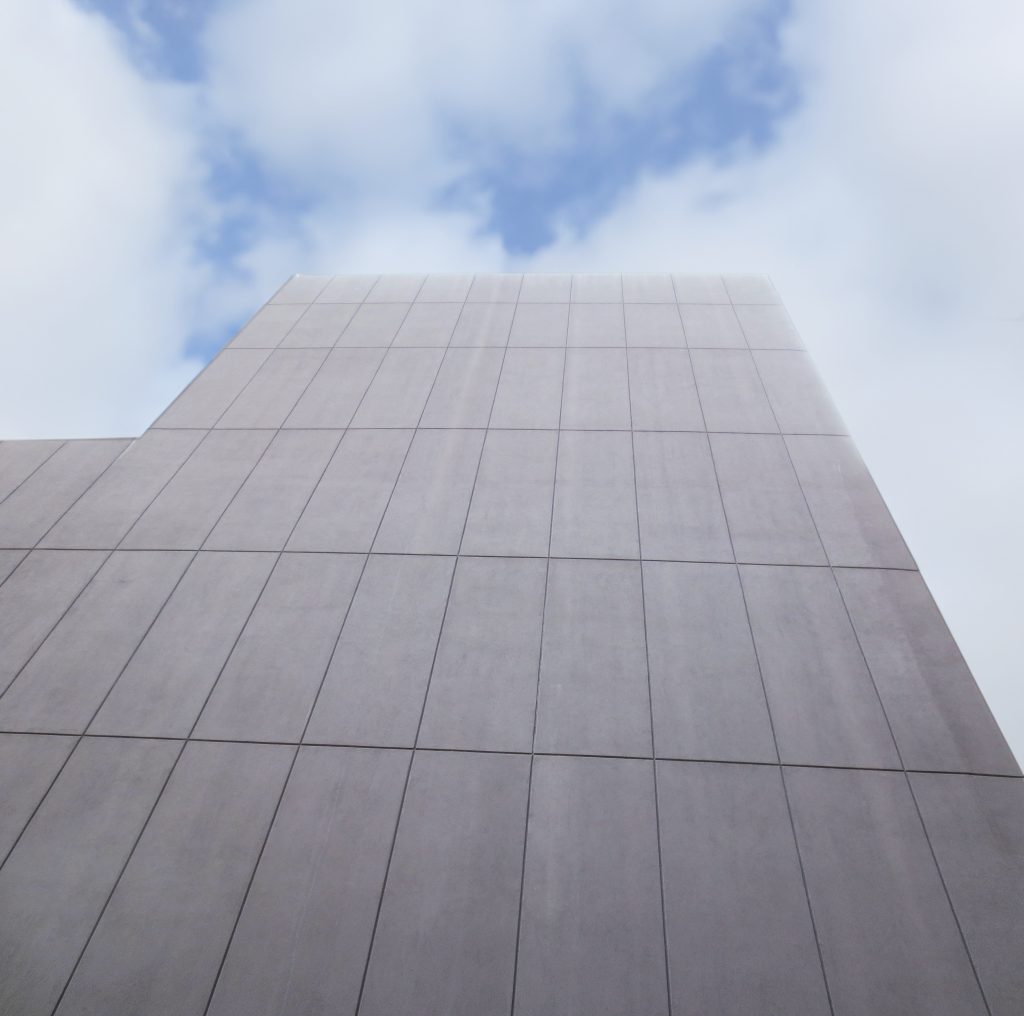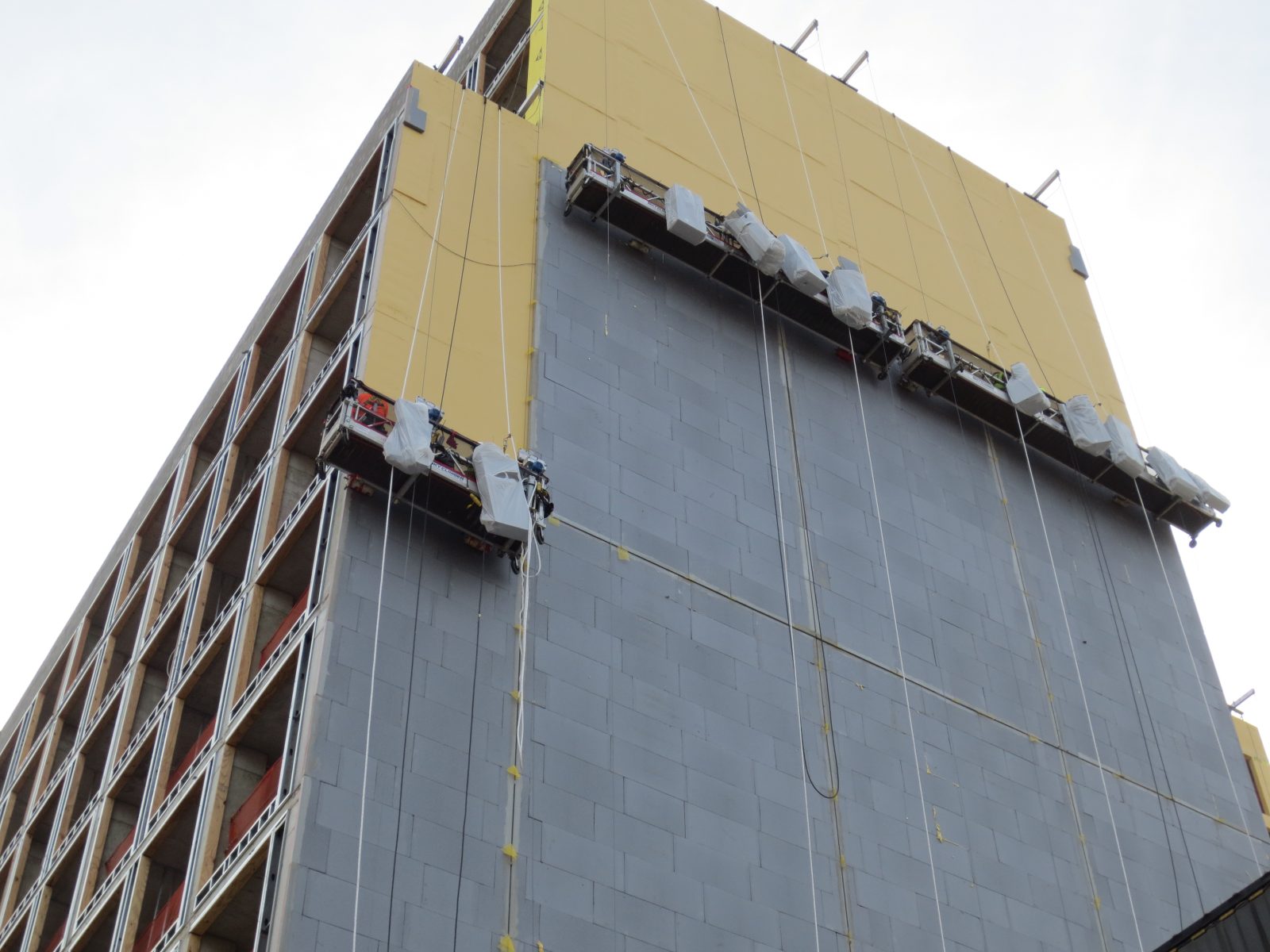NYC’S New Fire Life Safety Requirements for Combustible Exterior Wall Materials

The New York City (NYC) revised building code went into effect in November 2022, introducing several changes and enhancements to improve the safety and resiliency of the city’s building stock. Included in this update were new fireblocking requirements for combustible exterior wall systems, which include new material restrictions, installation guidance, and testing methods to prevent fires from spreading across building enclosures.
These changes have raised questions for project teams and created new challenges to navigate. In response, the NYC Department of Buildings (DOB) issued Technical Bulletin 2022-013 to provide additional details and clarification. It is important for building owners and project teams to understand these new requirements to comply with changing NYC guidelines and anticipate potential delays as they go into effect.
WHY IS THE NYC BUILDING CODE CHANGING?
The NYC DOB and Fire Department are concerned about the rising use of combustible exterior wall materials on tall buildings. Tragic incidents—such as the Grenfell Tower fire in London, England—have demonstrated the severe consequences of using combustible materials in these applications, particularly where the fire department faces accessibility challenges.

While combustible exterior wall systems are still permitted under the NYC building code, these new requirements pose significant challenges for the architecture, engineering, and construction (AEC) industry.
WHO DOES THIS AFFECT?
These regulations apply to most new construction, repairs, and retrofits. There are some exceptions for Type V construction, including single-family homes and one-story buildings.

WHAT ARE NYC’S NEW REQUIREMENTS?
The 2022 NYC building code outlines several new and updated fire life safety requirements for exterior cladding systems, depending on the materials and assemblies used. Changes include additional prohibited locations for certain materials, fireblocking and thermal barrier requirements, testing measures, and special inspections. These requirements can be found in the building code at the sections outlined in Table 1.

PROHIBITED LOCATIONS
There are new restrictions on where and how much combustible exterior wall coverings can be used (except for Type V construction):
- No more than 10% of the exterior wall surface area on any given story, and not permitted where the fire separation is less than 5 ft.
- No more than 40 ft above grade.
- Fire-retardant treated (FRT) wood (complying with Section 2303.2) can be installed up to 60 ft above grade, where fire separation is 5 ft.
- Not permitted at or adjacent to exterior balconies.
- Not permitted at Type IV construction using cross-laminated timber (CLT) or structural composite lumber (SCL).
Additional prohibited locations are listed for plastics (Chapter 26), metal composite materials (Section 1407), and high-pressure laminates (Section 1409).
Combustible materials are also prohibited as the outermost surface of an exterior wall covering when retrofitting existing non-sprinklered high-rise buildings, with some exceptions per Section 1406.5. There are exceptions for some combustible materials (i.e., MCM, EIFS, HPL, FRP) if the assembly is tested in accordance with NFPA 285.

FIREBLOCKING
In addition to fireblocking requirements in the previous building code, fireblocking materials are now required at the following locations:
- All sides of wall openings, such as windows and doors.
- At every slab edge or at maximum 20 ft intervals, for a height of not less than 8 in.
- Aligned horizontally and vertically with fire-rated interior separations due to different occupancy groups.
For some combustible materials, fireblocking is also required at both vertical and horizontal edges at 20 ft-maximum distances to form 100 sq-ft-maximum compartments. There are also additional fireblocking requirements for retrofitting non-sprinklered buildings over 75 ft.
Fireblocking must extend from the wall sheathing to the backside of the exterior cladding, which means it must interrupt any intermediate combustible materials, such as foam plastic insulation. There are some exceptions for foam plastic insulations, such as a typical EIFS assembly, depending on the location and type of veneer.
The fireblocking materials used must be “non-combustible” and form an “effective barrier” between spaces. Acceptable materials according to Section 718.2.1 include 1/2 in. gypsum board, 1/4 in. cement-based millboard, batts or blankets of mineral wool and mineral fiber, and other materials approved by the commissioner.

THERMAL BARRIERS
New thermal barrier requirements have been added to separate the combustible materials from the interior of a building, such as 5/8 in.-thick gypsum wallboard to increase fire exposure duration by 20 minutes. Complicating this requirement, some products like intumescent coatings are currently only tested for 15 minutes and cannot be used unless tested to the full 20-minute duration required by NYC.

FULL-SCALE TESTING
National Fire Protection Association (NFPA) Standard 285 testing for full wall assemblies is still required in NYC and must now include the type and location of fireblocking. However, there is currently limited availability of NFPA 285-tested assemblies with fireblocking included. Manufacturers will need time to repeat testing with new fireblocking methods to comply with these new requirements and gain approval for their existing systems. At present, the NYC DOB does not accept an engineering judgment as a substitute for testing.
SPECIAL INSPECTIONS
New special inspection requirements include verifying compliance with approved NFPA 285 test reports; fireblocking materials, installation, and location; and water-resistive barrier (WRB) and thermal barrier installation.
There are several notable exceptions for WRB, including:
- Fireblocking and special inspections are not required where WRBs are the only combustible component in an exterior wall, have been tested per NFPA 285, and satisfy the requirements of exceptions 1 or 2 of Section 1403.5.1.
- Special inspections are not required for WRB on Type VB construction up to 40 ft or less in height above grade.
- WRBs used for fenestration flashing are not considered part of the WRB.
A new requirement is that the designer of record must now certify “any deviation which occurs during the course of installation” to confirm that it still meets the NFPA 285 acceptance criteria (see Section 1401.2).
WHAT’S NEXT?
While combustible exterior wall systems are still permitted under the NYC building code, these new requirements pose significant challenges for the architecture, engineering, and construction (AEC) industry. Previously, licensed professionals had the option to use engineering judgments to demonstrate equivalence to NFPA 285-tested assemblies. However, the limited availability of NFPA 285-tested assemblies incorporating fireblocking has diminished the viability of this approach. In addition, the new requirements will require additional detailing at new fireblocking locations to allow for airflow and water drainage through wall cavities. Consequently, designers and building owners are likely to avoid using these materials until manufacturers perform the necessary testing to meet the new NYC requirements. Furthermore, many manufacturers are offering non-combustible alternatives, anticipating their increasing popularity. Designers opting to use combustible materials should carefully review these code changes and incorporate them into specifications and construction documents.